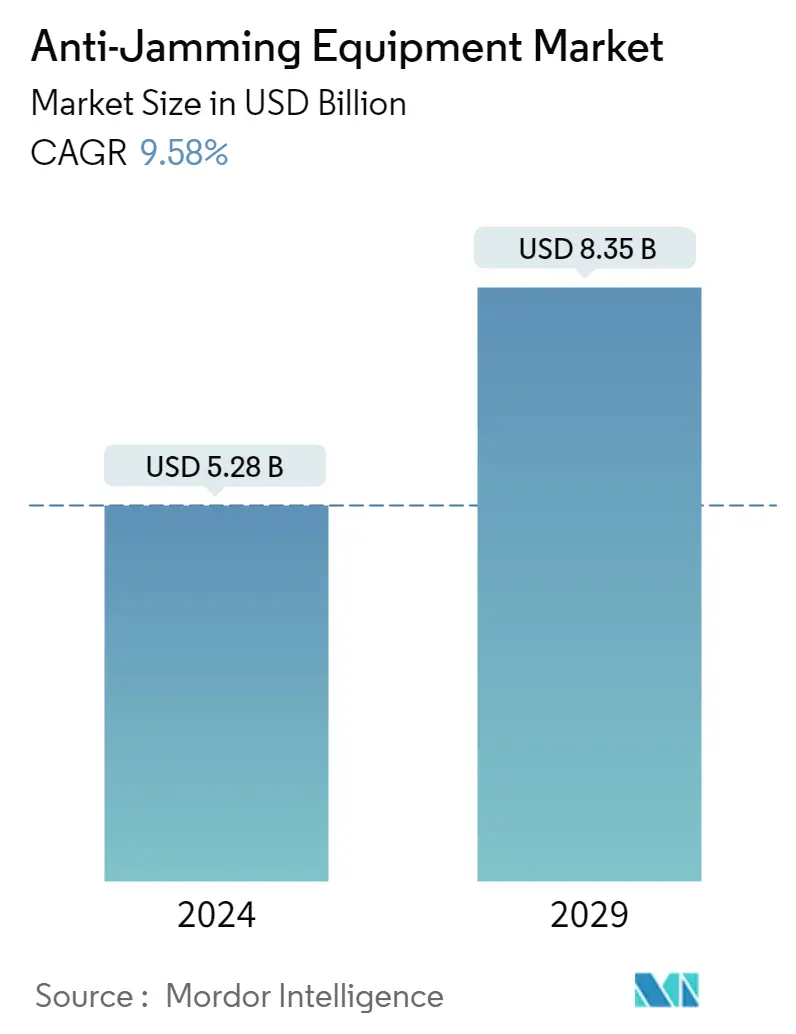Market Size of Anti-Jamming Equipment Industry

| Study Period | 2019 - 2029 |
| Market Size (2024) | USD 5.28 Billion |
| Market Size (2029) | USD 8.35 Billion |
| CAGR (2024 - 2029) | 9.58 % |
| Fastest Growing Market | Asia Pacific |
| Largest Market | North America |
Major Players
*Disclaimer: Major Players sorted in no particular order |
Need a report that reflects how COVID-19 has impacted this market and its growth?
Anti Jamming Equipment Market Analysis
The Anti-Jamming Equipment Market size is estimated at USD 5.28 billion in 2024, and is expected to reach USD 8.35 billion by 2029, growing at a CAGR of 9.58% during the forecast period (2024-2029).
- Anti-jamming solutions have become critical for various applications. Unmanned vehicles, automated robotic platforms, time synchronization systems, and various special and military vehicles have endangered the impossibility of receiving GNSS signals. The rapid development of jammers and industrial noise boosted the demand for interference immunity for reliable functioning.
- Wireless networks are crucial in maintaining continuous connectivity and services, as almost all network devices are embedded in environments. Due to their nature, wireless networks are highly susceptible to attacks by any technology, such as jamming. In that regard, anti-jamming has been introduced to improve wireless communication networks' quality.
- Jamming causes various problems, such as hindrance to wireless transmission, denial of service (DOS), insertion of unwanted messages, corrupting of the original message's content, blocking messages with high importance, and interference of radio signals.
- GPS signals are weak and susceptible to interference and intentional jamming. They are usually obscured by thermal noise and only observable with a GPS receiver. For instance, as stated by Novatel, GPS signals can be disrupted even with a small jammer of about 10 watts power for about 30 km (line of sight). GPS anti-jamming devices introduced in such an environment ensure that the GPS receiver continues to operate by using power minimization to reduce the effect of interference and jamming.
- Low spectral efficiency and rigid communication patterns are drawbacks of traditional anti-jamming technologies like sequence-based frequency hopping and direct sequence spread spectrum. Jamming devices are becoming more complex and efficient as software-defined radio develops.
- During COVID-19, various countries were highly affected as the defense sector experienced disruption in the supply chain and manufacturing process due to lockdowns imposed to combat the spread of the virus in North America, Europe, and Asia-Pacific.
